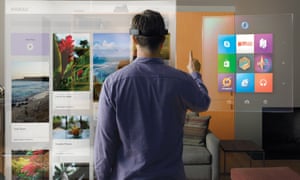The coat hanger – often with a red line through it – is a powerful feminist symbol. Conjuring images of women suffering unspeakable consequences of unsafe abortion, the coat hanger sends a foreboding message about a past we must not return to. The implications are clear: abortions women give themselves when they cannot access legal services are dangerous.
While the coat hanger rhetoric has been useful for the abortion rights movement, it has become problematic in the 21st century. Coat hangers are no longer the method of choice for women who want to end a pregnancy on their own. In my research in Texas, women much more commonly report using medications or herbs when they try to self-induce an abortion. Some of these medications are very safe and effective, while the problem with herbs is that they are often ineffective.
This representation of self-abortion as always dangerous is also problematic, because women may in fact be able to safely have an abortion on their own without medical supervision. Focusing solely on the coat hanger imagery also overshadows any conversation about women’s agency and self-determination when it comes to their healthcare.
Not all women who attempt to end a pregnancy on their own do so because they have no other option. Some prefer self-care and turn to herbs and supplements to manage most of their health needs, and some women see self-induction as less invasive and more natural than a clinic-based abortion. Others are just looking for a simple solution to a problem that our society has stigmatized and made difficult to solve.
Medication abortion could change the way our society perceives self-induced abortion. This option for pregnancy termination is available in many US clinics at up to 10 weeks gestation and allows women to take medications at home, where their experience is very similar to a natural miscarriage.
The most effective regimen involves the use of mifepristone, also known as RU-486, followed by misoprostol. Taken together, these drugs are more than 95% effective at causing a complete abortion. Misoprostol can also be used alone, but the efficacy of this method is closer to 85%.
A new article I co-authored in the British Journal of Obstetrics and Gynaecology turns the notion of self-abortion even further on its head by asking a simple question: do the drugs used in medication abortion meet the criteria of the US Food and Drug Administration (FDA) for over-the-counter sale? The answer is a qualified yes, although more research is needed.
Of course, at the moment, the idea of over-the-counter access to medication abortion in the United States sounds crazy. Currently American women in most states – unlike women in many other countries – are unable to buy even birth control pills without a prescription.
But in the same way that women around the globe are getting contraceptives on their own, many are obtaining medication abortion over the counter at pharmacies. The limited data so far suggests women are doing this safely – and there is no question that use of these medications has contributed to a reduction in abortion-related mortality worldwide.
The FDA has standardized criteria to decide if a medication is appropriate for over-the-counter sale. For medication abortion, the most critical remaining step is determining whether women can assess on their own if the method is appropriate for them – in particular, whether they are less than 10 weeks pregnant. Studies have shown that women are quite accurate at dating their pregnancies if they know when their last menstrual period was. Of course, women could also get an ultrasound, which might be easier to obtain – and more likely to be covered by insurance if they have it – than a clinic-based abortion.
Beyond dating the pregnancy, women must only answer a few health-related questions to determine their eligibility. One or two blood tests may also be required, although their utility is debatable. The rest of the medication abortion process already takes place at home, and women are told to seek care if they have unusual symptoms, such as fever or heavy bleeding. Women can also assess on their own whether the abortion was complete.
While all of these preliminary data are encouraging, more research is needed to clearly document whether the FDA’s criteria are met. We also need to know how much demand there is for over-the-counter medication abortion. It may be that most US women would prefer to meet with a doctor or nurse practitioner before beginning the abortion process, and clearly clinic-based support must remain an option for women.
From a purely medical perspective, it no longer makes sense to demonize women’s safe use of abortion medications at home – just as the abortion rights movement should no longer rely on rhetoric around returning to the days of coat-hanger abortions.
It may be a long time before these drugs are on the shelf of your neighborhood pharmacy, but in the meantime, there are other ways to improve access to this technology and help women obtain abortion care earlier in pregnancy.
Research has already demonstrated the safety of nurse practitioners providing medication abortion, as well as the use of telemedicine to expand access to this option. While we wait for more data on over-the-counter medication abortion, the time has come to start loosening restrictions on this abortion method and to help give women the type of care they want.
Should over-the-counter medical abortion be available? | Daniel Grossman

